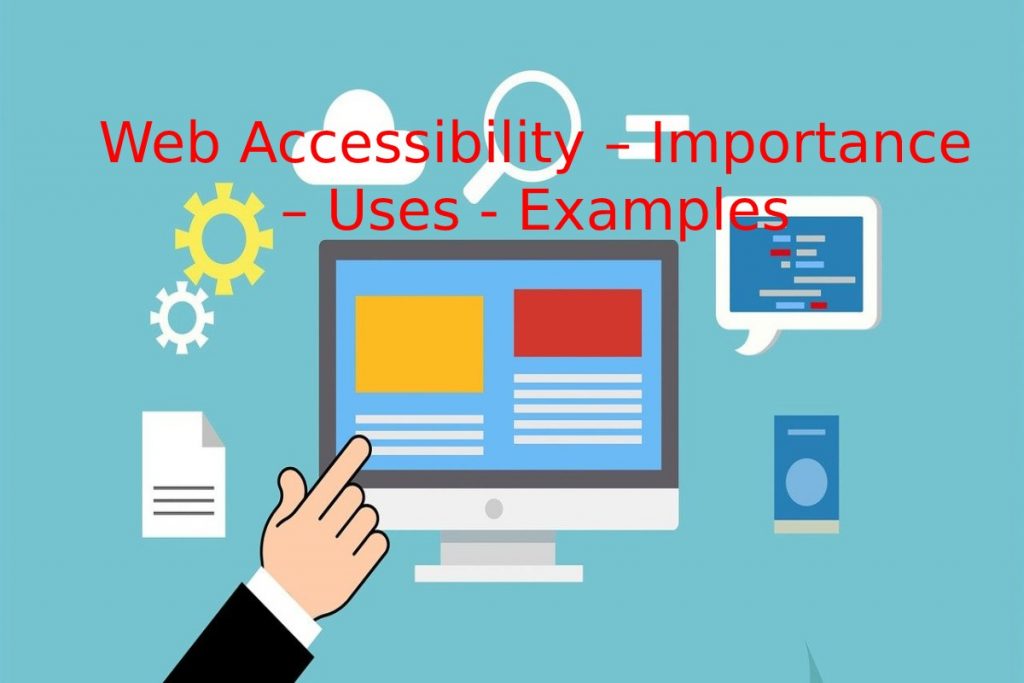Table of Contents
Web Accessibility
Web Accessibility: Responsible design solutions are increasingly being developed in cities to give accessibility to those in wheelchairs or who require assistance to navigate the streets. On the walkways, for example, you may have seen ramps and guides.
But what about the virtual world? Web accessibility is the concept that refers to inclusion and adaptation for special needs in online experiences. Here we will examine it so that you can be inspired and adapt it to your brand.
What is Web Accessibility?
Web accessibility is the characteristic of digital products that allow users with disabilities to navigate their interfaces with the least possible difficulty. It is aimed at people with disabilities or visual weakness, photosensitivity, other conditions, and in cases of illiteracy.
The Importance of Web Accessibility
About 15% of the world’s population has some disability. In recent years, a decrease in Internet use has been observed in this group of users. One of the reasons is that most digital experiences are designed for people without disabilities (in a phenomenon called “ableism”, which ignores populations with different needs).
Therefore, web accessibility is essential to improving browsing and enjoyment for users with a disability or condition.
In the case of web accessibility by a brand, it allows you to reach a group of users who are probably not considered by the competition and who, moreover, may perfectly match your target audience.
The Four Principles of Web Accessibility
According to the WWW Consortium Web Accessibility Initiative, these are the principles to keep in mind:
1. Perceptibility
This principle refers to web content being perceptible to most users. Thus, it presents auditory alternatives to the content in images (such as alternative text, which is readable by voice programs for people with visual disabilities) and labels for buttons and other optical components.
Also, it is possible to add audio versions of the text content. For people who are illiterate to some degree, the use of icons helps them understand the functions of a website or application.
2. Operability
Operability indicates that users can operate or manage the digital experience. For this reason, automatic advances in a blog or the automatic slide show in a presentation are becoming less common. The idea is that the user can decide how much time to invest in each piece of content.
For example, a person with dyslexia or low vision will be able to spend as much time as they need to understand a text. It also implies that she can zoom in or integrate the platform or app with tools focused on her needs.
Operability also means that the content does not have flashes or other animations that can cause seizures in people with brain injuries, Alzheimer’s disease, epilepsy, etc.
Also Read: How to Start a Business – Steps – Tips
3. Understanding
This element is essential so that all users, regardless of whether they have a disability or not, can understand the information. The text must be legible and clear; Generally, the contents must have a layout and intuitive structure for people who share a language and culture.
In the case of groups of users with some intellectual or reading disability, it is helpful to add dictionaries, simplify technicalities and provide technical sheets or summaries that condense the information.
4. Robustness
This principle indicates that virtual products must Oriente to work on different devices and browsers and be compatible with user support tools. How often have you come across websites that don’t work 100 percent in specific browsers? This is even more frustrating for people who require additional software and often find limited functionality across websites, platforms, and apps.
Therefore, make sure that your digital assets are adaptable and that the functions are fully available on different devices and browsers and compatible with the most popular accessibility programs (such as Voice Access, Google Talkback, and TapTapSee, among others).
Also Read: What is an Entrepreneur – Definition – Characteristics
Five uses of Web Accessibility
We have already mentioned several uses of web accessibility according to different conditions. Here, we will briefly review some of them:
1. Use of web accessibility for people with visual disabilities
People who are blind, visually impaired, or even highly nearsighted or farsighted can benefit from auditory text transcriptions, zoom options for specific sections of a web page or app window, alternative text for images, and other types of accommodations.
2. Use of web accessibility for people with some degree of illiteracy or dyslexia
For special needs people in this category, you can have dictionaries, pop-ups with specialized terms, and even reinterpretations of the text to help them delve into its meaning. Likewise, appropriate fonts (not handwritten, without elaborate embellishments, etc.) are also beneficial.
3. Use of web accessibility for people with conditions that cause seizures
People who suffer from a condition associated with seizures, such as photosensitive epilepsy, will benefit from not adding animations or content to your website that could trigger a light stimulation episode. Although the legend “The following images are not suitable for photosensitive people” is helpful, it is still better that you do not include those types of stimuli at all.
4. Use of web accessibility for people with digital illiteracy
Intuitive icons and control flows help people with digital illiteracy understand how your website, app, or platform works. In addition, plain language user guides, available in one click, will be a valuable resource.
5. Use of web accessibility for people with hearing disabilities
People with hearing disabilities will be able to access your audio or video content with the help of suitable transcripts. Remember that automatic transcripts, such as those provided by YouTube, may have errors that make them difficult to understand. Therefore, you must invest the necessary resources in an optimized text.
Also Read: What is an Investment – Investing Examples and Five Benefits of Investing
